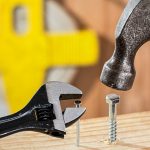Unlock the secrets of the world’s most productive people and revolutionize your own productivity. Discover the tried-and-true strategies that propel them to success.
From mastering daily routines to setting clear goals, you’ll learn practical techniques to prioritize tasks, boost focus, and streamline communication.
Harness the power of technology to enhance your efficiency and manage your energy levels for sustainable productivity.
Say goodbye to procrastination and hello to motivation. Get ready to transform your productivity game.
Key Takeaways
 Implement a consistent daily routine and morning routine for success
Implement a consistent daily routine and morning routine for success- Prioritize tasks based on importance and urgency
- Proactively plan and anticipate potential obstacles for effective time management
- Foster open and transparent communication, utilize technology, and prioritize self-care to maintain work-life balance and prevent burnout
The Power of Daily Routines
You can increase your productivity by implementing a consistent daily routine. Creating a morning routine is one of the most effective ways to set yourself up for success throughout the day.
The importance of self-care can’t be overstated. Starting your day with activities that nourish your body and mind can greatly impact your overall productivity. Consider incorporating activities like meditation, exercise, or reading into your morning routine. These practices can help you clear your mind, boost your energy levels, and set a positive tone for the rest of the day.
To create a morning routine that works for you, it’s important to be intentional and prioritize activities that align with your goals and values. Identify the key tasks or habits that you find most beneficial and make them a non-negotiable part of your routine. This could include journaling, planning your day, or practicing gratitude.
Another essential aspect of a productive daily routine is consistency. By waking up and going to bed at the same time each day, you can regulate your body’s internal clock and optimize your energy levels. Additionally, having a consistent routine can help you develop good habits and eliminate decision fatigue, as you won’t have to waste time thinking about what to do next.
Remember to be flexible and willing to adjust your routine as needed. Life is unpredictable, and there may be days when your routine needs to be adapted. However, by consistently practicing self-care and creating a morning routine that aligns with your goals, you can set yourself up for success and increase your overall productivity.
Setting Clear and Achievable Goals
When setting clear and achievable goals, it’s important to break them down into smaller, manageable tasks that can be accomplished step by step. This approach not only makes your goals more attainable but also helps you maintain motivation throughout the goal-setting process.
Here are three practical strategies to help you achieve work-life balance and stay motivated while pursuing your goals:
-
Prioritize and Delegate: Start by identifying the most important tasks that align with your goals. Focus on completing these tasks first, and if possible, delegate other tasks that can be handled by someone else. By prioritizing and delegating, you can free up time and energy for the things that truly matter to you.
-
Create a Schedule: Set aside specific blocks of time for both work and personal activities. This will help you establish boundaries and ensure that you’re dedicating time to both your professional and personal life. Stick to your schedule as much as possible, but also be flexible enough to accommodate unexpected events or changes.
-
Celebrate Milestones: Break your larger goals into smaller milestones, and celebrate each achievement along the way. Recognizing your progress and rewarding yourself can help boost your motivation and keep you focused on the end goal. Whether it’s treating yourself to a small indulgence or taking a break to relax, make sure to acknowledge and appreciate your hard work.
Prioritizing Tasks for Maximum Efficiency
To achieve maximum efficiency, start by prioritizing your tasks based on their importance and urgency. Maximizing efficiency is all about effective time management techniques. By prioritizing your tasks, you can ensure that you’re focusing on what matters most and making the most of your time.
When prioritizing tasks, first consider their importance. Ask yourself: which tasks are essential to achieving your goals or completing your projects? These tasks should be at the top of your list. By focusing on the most important tasks, you’re making sure that you’re making progress towards your objectives.
Next, consider the urgency of each task. Are there any deadlines or time constraints that need to be met? Tasks that are time-sensitive should also be given priority. By tackling these tasks first, you can avoid the stress and pressure of last-minute deadlines.
It’s also important to be realistic about what you can accomplish in a given timeframe. Be mindful of your own productivity levels and the resources available to you. Don’t overload your to-do list with more tasks than you can handle. Instead, focus on a manageable number of tasks that you can complete efficiently and effectively.
In addition to prioritizing tasks, it can be helpful to break them down into smaller, actionable steps. This allows you to make progress consistently and stay motivated. By breaking tasks into smaller pieces, you can also identify any potential obstacles or challenges and address them proactively.
By prioritizing your tasks based on importance and urgency, you can maximize your efficiency and make the most of your time. Incorporating these time management techniques into your daily routine can help you stay focused, organized, and consistently productive.
Harnessing the Power of Focus and Concentration
Stay present and fully engaged in your tasks by harnessing the power of focus and concentration. In today’s fast-paced world, distractions are everywhere, making it difficult to stay focused on what truly matters. However, improving your focus skills is possible with the right strategies.
Here are three techniques to help you harness mindfulness and enhance your concentration:
-
Practice mindfulness meditation: Take a few minutes each day to sit quietly and focus on your breath. Pay attention to the present moment, without judgment or attachment to thoughts. This practice trains your mind to stay focused and brings a sense of calmness, allowing you to concentrate better on your tasks.
-
Break tasks into smaller, manageable chunks: When facing a large project, it can be overwhelming and challenging to maintain focus. To combat this, break the task into smaller, actionable steps. By focusing on one step at a time, you can stay engaged and make progress more efficiently.
-
Minimize distractions: Identify the common distractions in your environment and take steps to eliminate or minimize them. This may involve turning off notifications on your phone, closing unnecessary browser tabs, or finding a quiet space to work. Creating a distraction-free zone allows you to direct your full attention to the task at hand.
Embracing Proactive Time Management Strategies
You can increase your productivity and accomplish more by embracing proactive time management strategies, such as prioritizing tasks and setting clear goals.
Proactive planning is a key aspect of effective time management. By taking the time to plan ahead and anticipate potential obstacles, you can ensure that you stay on track and make the most of your time.
One popular technique for proactive planning is time blocking. This involves setting aside specific blocks of time for different tasks or activities. By allocating dedicated time slots for each task, you can avoid multitasking and maintain focus on one thing at a time. This not only increases your efficiency but also helps to reduce stress and overwhelm.
Another important aspect of proactive time management is prioritization. It’s crucial to identify the most important tasks and focus your time and energy on those first. By setting clear goals and prioritizing tasks based on their importance and urgency, you can ensure that you make progress on the most impactful work. This helps to prevent procrastination and ensures that you tackle the most critical tasks while you have the energy and focus to do so.
Optimizing Your Workspace for Productivity
Set up two separate workstations in your office, one for focused tasks and another for collaborative work, to optimize your workspace for productivity. By creating dedicated spaces for different types of work, you can increase your efficiency and focus.
Here are three key steps to consider when optimizing your workspace:
-
Invest in ergonomic furniture: Ergonomic furniture is designed to support your body and promote better posture, reducing the risk of discomfort and injury. Consider getting an adjustable desk and chair that can be customized to your specific needs. This will help you maintain good posture and minimize strain on your body, allowing you to work comfortably for longer periods.
-
Declutter your workspace: A cluttered workspace can be distracting and hinder your productivity. Take some time to declutter your work area and organize your belongings. Keep only the essentials within reach and neatly store away the rest. Use storage solutions like shelves, drawers, and file organizers to keep your workspace tidy and efficient. A clean and organized environment can help you stay focused and reduce distractions.
-
Create a collaborative work area: In addition to a dedicated space for focused tasks, it’s important to have an area where you can collaborate with colleagues or brainstorm ideas. Set up a separate workstation with a larger table or a whiteboard where you can gather and work together. This will encourage collaboration and make it easier to share ideas and communicate effectively.
Mastering the Art of Delegation
Delegate tasks to your team members in order to effectively distribute workload and improve productivity. Delegating effectively is an essential skill for any leader or manager. By empowering others to take on tasks and responsibilities, you not only lighten your own workload but also foster a sense of ownership and growth within your team. This can lead to higher levels of motivation, productivity, and overall success.
To delegate effectively, start by assessing the strengths and skills of your team members. Identify tasks that align with their abilities and interests, and assign them accordingly. This not only ensures that the workload is distributed evenly, but also allows individuals to work on tasks they excel at, leading to better results.
When delegating tasks, clearly communicate your expectations and provide clear instructions. Be specific about the desired outcomes, deadlines, and any relevant resources or support. This helps to avoid confusion and ensures that everyone is on the same page.
While delegating, it’s important to trust your team members. Give them the autonomy to make decisions and find their own solutions. This not only empowers them, but also encourages creativity and innovation. By trusting your team, you create a positive and supportive work environment where individuals feel valued and motivated to perform at their best.
Regularly check in with your team members to provide feedback and support. Offer guidance and assistance when needed, but also give them space to learn and grow. By providing ongoing support, you can help your team members succeed and build their skills and confidence.
Incorporating Regular Breaks for Mental Refreshment
While it may seem counterintuitive, taking regular breaks throughout your workday can actually improve your mental clarity and overall productivity. It’s important to prioritize your mental health and find a balance between work and personal life.
Here are three reasons why incorporating regular breaks is beneficial:
-
Increased focus and creativity: When you work for long periods without breaks, your mind becomes fatigued, making it difficult to concentrate and come up with fresh ideas. Taking short breaks allows your brain to recharge and boosts your ability to think creatively. Try stepping away from your desk for a few minutes, taking a walk, or engaging in a different activity to stimulate your mind.
-
Enhanced productivity: Contrary to popular belief, working longer hours doesn’t necessarily equate to higher productivity. Studies have shown that individuals who take regular breaks are more productive than those who work without interruption. By stepping away from your work and giving yourself a mental break, you can return with a renewed focus and increased energy levels, allowing you to accomplish tasks more efficiently.
-
Improved overall well-being: Incorporating regular breaks into your workday promotes better work-life balance and reduces stress levels. It’s essential to take care of your mental health to avoid burnout and maintain a healthy lifestyle. Use your breaks to engage in activities that help you relax and unwind, such as reading a book, meditating, or practicing deep breathing exercises. By prioritizing your well-being, you’ll be able to approach your work with a clearer and more positive mindset.
Cultivating a Growth Mindset for Continuous Improvement
As you strive for continuous improvement, it’s crucial to cultivate a growth mindset that embraces challenges and values learning opportunities. A growth mindset is the belief that your abilities and intelligence can be developed through dedication and hard work. It’s about seeing setbacks as opportunities for growth and approaching new challenges with a sense of curiosity and resilience.
To cultivate a growth mindset, start by reframing your thoughts and beliefs about your abilities. Instead of seeing failure as a reflection of your worth, view it as a stepping stone towards success. Embrace challenges as opportunities to learn and grow, and don’t shy away from taking risks. Remember that effort and persistence are key ingredients to achieving your goals.
In addition, seek out learning opportunities and surround yourself with people who inspire and challenge you. Engage in activities that push you out of your comfort zone and expose you to new ideas and perspectives. Continuously seek feedback and be open to constructive criticism, as this will help you identify areas for improvement and guide your growth.
Furthermore, develop a love for lifelong learning. Read books, listen to podcasts, and attend workshops or conferences to expand your knowledge and skills. Adopt a growth mindset towards your own development and embrace the idea that you can always improve and learn something new.
Streamlining Communication and Collaboration
To enhance your productivity, make sure you set clear goals and establish a streamlined communication and collaboration process with your team. Improving communication effectiveness and enhancing collaboration efficiency are key factors in achieving success.
Here are three practical strategies to help you streamline communication and collaboration:
-
Foster open and transparent communication: Encourage your team members to express their ideas, concerns, and feedback openly. Create a safe and inclusive environment where everyone feels comfortable sharing their thoughts. Utilize various communication channels, such as team meetings, video conferences, and instant messaging platforms, to ensure effective and timely communication. Active listening is also crucial in understanding and addressing any communication gaps.
-
Implement project management tools: Utilize project management tools to enhance collaboration efficiency. These tools provide a centralized platform for task management, document sharing, and progress tracking. They allow team members to access and update project information in real-time, eliminating the need for back-and-forth emails and unnecessary meetings. This streamlines collaboration and ensures that everyone is on the same page.
-
Set clear expectations and deadlines: Clearly define roles, responsibilities, and expectations for each team member. Establish realistic deadlines and milestones to keep everyone accountable. Regularly communicate progress updates to ensure that projects stay on track. Clarifying expectations and setting deadlines helps avoid confusion, minimizes delays, and improves overall collaboration efficiency.
Utilizing Technology to Enhance Productivity
You can boost your productivity by leveraging technology for streamlined communication and collaboration. With the continuous advancements in technology, there are various digital tools available that can help you work more efficiently and effectively. By adopting these tools, you can enhance your productivity and achieve better results in your work.
One of the key technology advancements that can significantly improve productivity is project management software. These tools allow you to organize and track your tasks, assign responsibilities, and set deadlines. They also provide a centralized platform for team collaboration, allowing everyone to stay updated on project progress and communicate seamlessly.
Another digital tool that can enhance productivity is cloud storage. By storing your files and documents in the cloud, you can access them from anywhere at any time, eliminating the need to carry around physical copies or rely on email attachments. This not only saves time but also ensures that everyone has the most up-to-date version of the files.
Communication tools, such as instant messaging and video conferencing, have also revolutionized the way teams collaborate. They enable real-time communication and eliminate the need for lengthy email chains or unnecessary meetings. With these tools, you can quickly discuss ideas, ask questions, and make decisions, all without leaving your desk.
Managing Energy Levels for Sustainable Productivity
Don’t underestimate the importance of managing your energy levels for sustainable productivity. Balancing work-life integration and optimizing your nutrition are key to maintaining high energy levels throughout the day. Here are three practical strategies to help you manage your energy effectively:
-
Prioritize self-care: Taking care of yourself is crucial for sustaining productivity. Make sure to set aside time for activities that rejuvenate and energize you, such as exercising, meditating, or spending time with loved ones. By prioritizing self-care, you can prevent burnout and maintain a healthy work-life balance.
-
Fuel your body with nutritious food: The role of nutrition in energy management can’t be overstated. Choose foods that provide sustained energy, such as whole grains, lean proteins, fruits, and vegetables. Avoid sugary snacks and processed foods that can lead to energy crashes. Additionally, stay hydrated by drinking enough water throughout the day. By fueling your body with nourishing foods, you can optimize your energy levels and improve your overall well-being.
-
Take strategic breaks: While it may seem counterintuitive, taking regular breaks throughout the day can actually enhance your productivity. Engaging in short, purposeful breaks can help you recharge and refocus. Try incorporating activities like stretching, deep breathing exercises, or going for a short walk to rejuvenate your energy levels. By strategically scheduling breaks, you can maintain a steady level of productivity without feeling overwhelmed or fatigued.
Overcoming Procrastination and Boosting Motivation
Boosting motivation is key to overcoming procrastination and achieving your goals. If you find yourself constantly putting tasks off, it’s time to take action.
One common reason for procrastination is perfectionism. The fear of not doing something perfectly can often paralyze us from even starting. To overcome this, remind yourself that perfection isn’t the goal. Instead, focus on progress and improvement. Break your tasks into smaller, manageable steps and celebrate each milestone along the way. This will help keep you motivated and prevent overwhelm.
Another important aspect of overcoming procrastination is maintaining a healthy work-life balance. When we’re overwhelmed with work, it’s easy to feel burnt out and lose motivation. Take regular breaks, both during the workday and throughout the week, to recharge and reset. Make time for activities that bring you joy and relaxation. It’s also helpful to set boundaries and prioritize your time effectively. Learn to say no to tasks or commitments that don’t align with your goals or values. By doing so, you create more space for the tasks that truly matter and increase your motivation to complete them.
Frequently Asked Questions
What Are Some Common Mistakes People Make When Setting Clear and Achievable Goals?
When setting clear and achievable goals, it’s important to avoid common mistakes.
One of these is a lack of specificity, which means not being clear about what exactly you want to achieve.
Another mistake is setting unrealistic expectations, such as trying to accomplish too much in too little time.
To avoid these pitfalls, take the time to clearly define your goals and make sure they’re realistic and achievable within a reasonable timeframe.
How Can I Effectively Prioritize Tasks to Ensure Maximum Efficiency?
To effectively prioritize tasks for maximum efficiency, start by assessing the urgency and importance of each task.
Use time management techniques like the Eisenhower Matrix to categorize tasks into four quadrants: urgent and important, important but not urgent, urgent but not important, and neither urgent nor important.
Focus on completing tasks in the urgent and important quadrant first, then move on to the other categories.
This approach will help you stay organized and make better use of your time.
What Are Some Tips for Maintaining Focus and Concentration Throughout the Day?
To maintain focus and concentration throughout the day, try these tips.
First, minimize distractions by turning off notifications and creating a dedicated workspace.
Second, practice techniques like the Pomodoro Technique, which involves working in focused bursts with short breaks in between.
Third, prioritize tasks and tackle them one at a time.
Finally, take care of your physical and mental well-being by staying hydrated, getting enough sleep, and taking regular breaks.
These strategies will help you stay focused and productive.
How Can I Optimize My Workspace for Improved Productivity?
To optimize your workspace for improved productivity, start by focusing on ergonomics. Arrange your desk and chair in a way that supports good posture and reduces strain on your body. Consider investing in an ergonomic chair and adjustable desk setup.
Next, declutter your workspace to minimize distractions and create a clean and organized environment. Use storage solutions and digital tools to keep everything in its place.
These simple steps can greatly enhance your productivity.
What Are Some Strategies for Overcoming Procrastination and Boosting Motivation?
Feeling stuck and unmotivated? Don’t despair! You can beat procrastination and boost your motivation with a few simple strategies.
Start by mastering time management techniques. Plan your tasks and break them down into smaller, manageable chunks. Set deadlines and prioritize your to-do list.
Another effective approach is to find an accountability partner. Share your goals and progress with someone who can hold you accountable.
Conclusion
You’ve now learned the secrets of the world’s most productive people. By implementing their strategies, you can achieve higher levels of efficiency and success in your own life.
Did you know that setting clear goals increases the likelihood of achieving them by 42%? So start today, set clear goals, prioritize tasks, and embrace proactive time management to become the most productive version of yourself.
Get ready to conquer your to-do list and accomplish your dreams!








